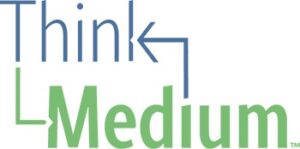It’s easy to get swept up in the promise of artificial intelligence technology and its applications, let alone the behind-the-scenes boardroom drama. (Here’s a prediction for 2024 – “OpenAI: The Movie” … made by AI!).
The exuberance for AI is not unfounded: Bank of America estimates AI will have $16 trillion of global economic impact by 2030, and WFA says 75% of advertisers are already using or will soon use generative AI.
But all is not rosy, of course. AI’s speed of innovation and deployment have raised concerns about risks and harm to people and businesses, some of which may have contributed to the recent turmoil among OpenAI’s leadership. And regulators have taken notice.
Balancing opportunity and risk
The value of AI is in processing data in volumes and ways that people cannot. But that doesn’t always work as expected. AI’s risks and opportunities span three forces that shape the advertising ecosystem: privacy, safety and efficiency. It’s essential to understand and anticipate risks – and employ checks and balances – across these areas to mitigate harm while tapping into opportunities.
Efficiency
Investment in AI is motivated by a quest to free up time and augment human capabilities through computation and pattern recognition that our minds could never achieve. For businesses, benefits include faster iteration, increased automation and amplification of creativity:
- Machine learning has long driven efficiency by matching ads to relevant consumers without demographic proxies.
- Upstream, the creative process is now employing generative AI to ideate, produce and test concepts.
- For brand safety, AI can increase scale and precision to flag problematic content in vast data sets derived from publishers/platforms. It can also enable violative content to be removed sooner or not appear at all, leading to a safer, more trustworthy experience.
We’re just scratching the surface of efficiency gains, which makes it crucial to have a thorough understanding of risks.
Privacy
Most AI privacy and data protection concerns surround large language models (LLMs), like GPT, which interpret content to generate text, graphic and audio outputs and interact with people.
These models require and process massive amounts of training data, and “unlearning” sensitive data is very difficult, requiring course-correcting with updated data and instructions.
Protecting privacy therefore requires clear guardrails and human oversight to be in place prior to training. This can prevent data leakage, such as inadvertently broadcasting or using personal information in response to an innocuous prompt … or a video call.
Fortunately, technical solutions can help. Major providers have shifted to hosting training data sets, which doesn’t inherently ensure privacy but does add some control. Other technologies can classify sensitive data, isolate personal information and anonymize data before feeding it to models. Privacy-enhancing tech (PETs) like Differential Privacy can further inject “noise” to thwart re-identification, cryptography can anonymize data, etc.
It’s worth noting that AI also presents privacy opportunities. The same pattern recognition whose training requires care can identify data misuse or even leakage within large data sets. This can detect data breaches and protect consumer data, while preventing lawsuits against businesses.
What you can do:
- Ensure data protections are in place from the start and ask your partners how they keep customer data safe.
- Remove as much personal information as possible before training AI solutions. It’s hard to leak something that’s not there in the first place.
- If applicable, take advantage of AI-based tools to identify data misuse and leakage.
- Be up front with your customers about AI use. In most cases, you’re trying to create customer benefit, and being transparent fosters comfort.
Safety
The rapid adoption of AI in advertising raises significant safety concerns. The opaque nature of AI has led to issues with racial and gender biases. A notorious example is when housing ads, which cannot legally be targeted to protected categories, were targeted via lookalike models.
Newer risks include generative AI producing misinformation, infringing training content copyrights and surfacing sensitive information. These risks all create consumer safety, brand safety and litigation risks.
To minimize these risks:
- Employ human oversight over AI models integrated into your business processes. Ask partners about their oversight and corrections practices to ensure their standards align with yours.
- Understand laws and regulations for your industry vertical and ensure they’re followed.
- You know your business and data best. Identify edge cases and biases that AI models might not recognize and provide examples for training sets.
- Ensure sensitive data is categorized and encrypted before training relevant models.
- If applicable, employ AI-based solutions to identify safety concerns at scale.
We all play roles in conscious innovation
AI should be an enhancer of human thinking and decision-making, not its replacement. While its potential to increase efficiency is immense, unchecked use can lead to pitfalls and can harm consumers and businesses.
Just as one wouldn’t allow a child to cross a busy street unsupervised, AI requires stringent measures to meet privacy and safety benchmarks. A conscious and active approach to deploying AI solutions can ensure they evolve in ways that are beneficial to all of us.
“Data-Driven Thinking” is written by members of the media community and contains fresh ideas on the digital revolution in media.
Follow ThinkMedium and AdExchanger on LinkedIn.
For more articles featuring Dennis Buchheim, click here.


















